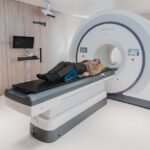A researcher from Brigham and Women’s Hospital’s recent study evaluated an innovative cuffless device that measures blood pressure at the wrist, providing hundreds of readings over several days to assist in cardiovascular risk evaluation and hypertension management. Globally, high blood pressure is the leading cause of death, affecting one in every two adults, yet only a quarter of those with hypertension have their condition under control. This underscores the critical need for new strategies for managing blood pressure effectively. The study, undertaken at Brigham and Women’s Hospital—a key institution within the Mass General Brigham healthcare system—explored the benefits of a cuffless blood pressure monitor that uses optical sensors to continuously and unobtrusively record readings. Published in Frontiers in Medicine, the research highlights significant advancements in diagnosing and managing hypertension facilitated by the adoption of cuffless technology.
Dr. Naomi Fisher of the Division of Endocrinology, Diabetes, and Hypertension at Brigham and Women’s Hospital and the study’s corresponding author emphasized the practicality of cuffless devices. She noted that these devices enable easy and reliable blood pressure monitoring outside the traditional clinical setting, potentially revolutionizing hypertension management by providing many more readings, both day and night. This increased frequency helps confirm hypertension diagnoses and guide medication adjustments more accurately. Medical guidelines increasingly support at-home blood pressure monitoring for a more accurate hypertension diagnosis and management. This shift is because blood pressure readings taken in a clinical setting can often be inaccurate; for example, some patients experience ‘white coat hypertension’ where their blood pressure spikes in medical settings, while others may have ‘masked hypertension,’ showing regular readings in a clinic but elevated levels at home.
Time-in-Target-Range (TTR), which reflects how often a patient’s blood pressure stays within the normal range, is emerging as a vital metric for assessing cardiovascular health. However, achieving an accurate TTR requires more frequent blood pressure readings than possible with conventional cuffs, which can be cumbersome and uncomfortable—in collaboration with colleagues from Aktiia SA, a Swiss biotech company, Dr Fisher analyzed over 2.2 million blood pressure readings from 5,189 participants across Europe and the UK using a cuffless wrist monitor developed by Aktiia. This device collected an average of 29 readings per day, significantly more than the four daily readings usually recommended, totalling an average of 434 readings per participant over 15 days.
By assessing TTR over these 15 days, researchers could stratify participants by the percentage of readings within the target range and compare these classifications to those derived from traditional monitoring methods. They discovered that conventional methods often misclassified between 26 and 45 per cent of subjects, whereas continuous monitoring for seven days could achieve over 90 per cent accuracy in risk classification. This level of frequency and accuracy in monitoring can primarily be achieved through cuffless technology.
Despite the promising results, the Aktiia device has yet to be approved by the U.S. Food and Drug Administration. Still, it has undergone multiple validations and is available over the counter in Europe and the UK. Efforts to evaluate and establish standards for such devices in the U.S. are ongoing. Dr. Fisher asserts that cuffless devices could fundamentally alter the landscape of blood pressure monitoring and hypertension management. By facilitating continuous, out-of-office blood pressure readings and leveraging this data to assess time-in-target range, cuffless devices show immense promise as predictors of cardiovascular risk, signalling a significant shift in the paradigm of blood pressure monitoring.
More information: Naomi D. L. Fisher et al, Optimizing time-in-target-range assessment for blood pressure: insights from a large-scale study with continual cuffless monitoring, Frontiers in Medicine. DOI: 10.3389/fmed.2024.1396962
Journal information: Frontiers in Medicine Provided by Brigham and Women’s Hospital








